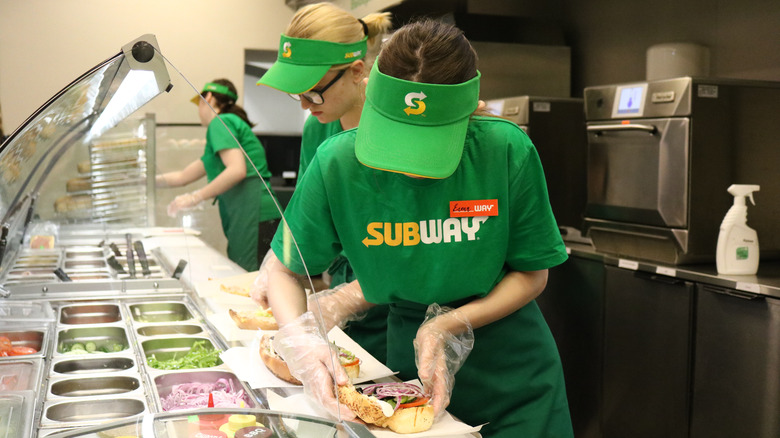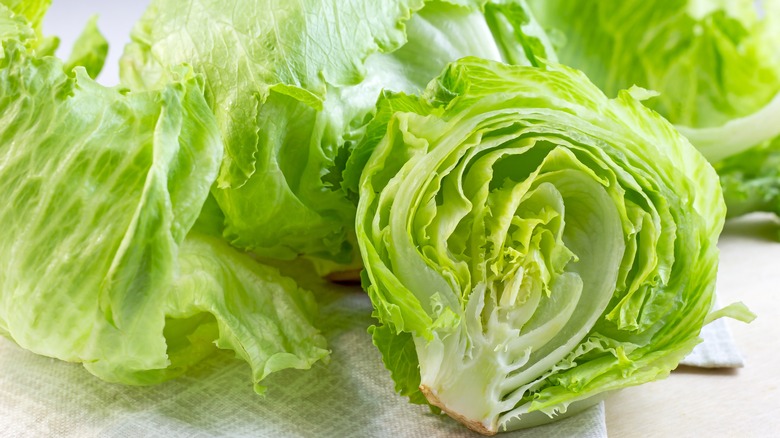Subway Goes Through An Alarming Amount Of Lettuce
The legacy of lettuce is really something to behold. Not merely just a ball of green leaves, the lettuce holds mighty potential. Despite its mundane appearance, lettuce has a range of health benefits (like Vitamins A, K, and C), and one even outlasted a U.K. prime minister's time in office. According to Rural Migration News, about 375,000 acres of lettuce packing these health benefits are grown in the U.S., estimated to be worth $3 billion. That acreage used to grow lettuce is believed to be increasing as well, and the Agricultural Marketing Resource Center reports that California and Arizona grow the largest quantities.
And lettuce is a lot more versatile than simply being a base for salads and accompaniment to sandwiches. BBC Good Food shows it can be used to make wraps, grilled as a side dish, and added to fish and beef recipes. It's no wonder that such a versatile ingredient is so popular for restaurants, and, according to fast-food chain Subway, they use fields of it daily (per Twitter).
Subway has an incredible appetite for lettuce
Subway operates over 37,000 restaurants across the world, according to the company's website, meaning that there are plenty of kitchens to keep fully stocked with fresh ingredients, including lettuce. Many Subway menu items, such as wraps, salads, and sandwiches, contain lettuce, so it's an item that's in high demand.
In fact, there's so much demand for lettuce that Subway reckons it gets through 16 acres of the leafy vegetable every day, according to a Twitter post from the chain. That equals roughly 12 football fields of lettuce (per Scott Fujita).
Investing in lettuce has helped Subway grow some impressively big returns: The restaurant chain's 20,000-plus U.S. stores create $9.4 billion of annual revenue, reports CNN Business. However, Subway's lettuce usage has taken a hit in Australia, where supplies have been hit by crop destruction and rising prices (per SkyNews). As a consequence, Subway has been mixing lettuce with cabbage to prevent supplies from completely running out. At least they're both green — and cabbage packs its own nutritional benefits of vitamins and minerals (per Healthline).

